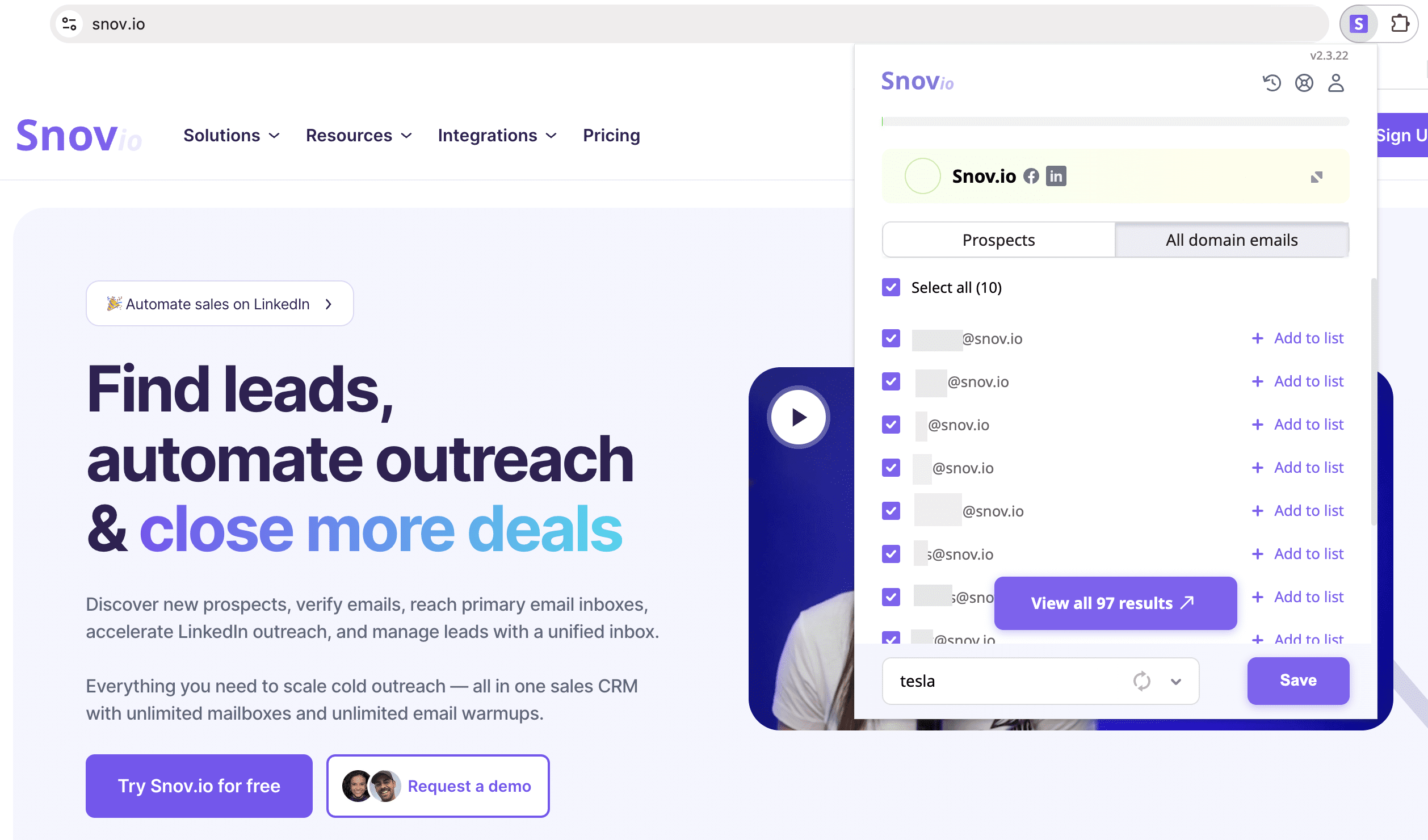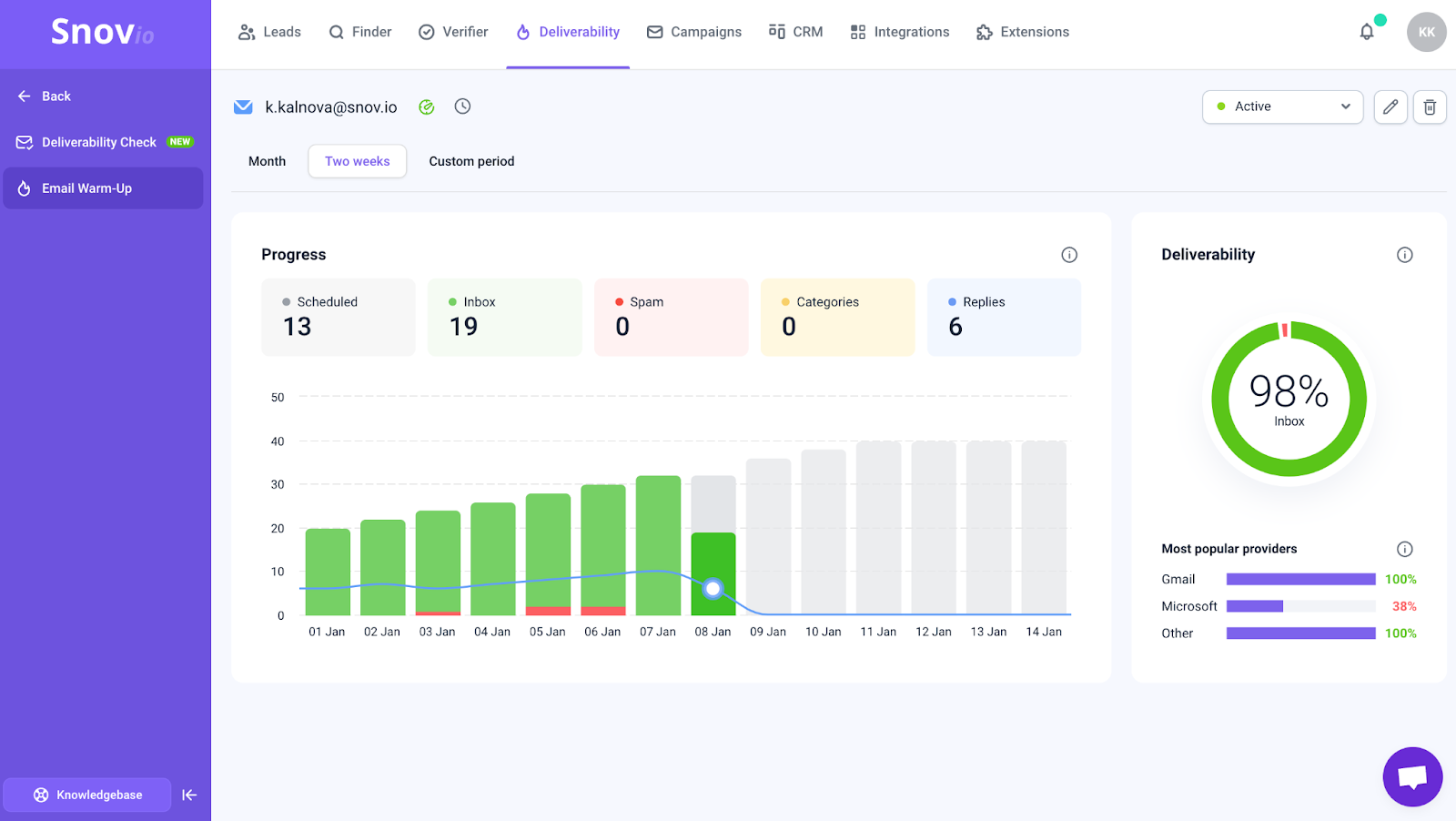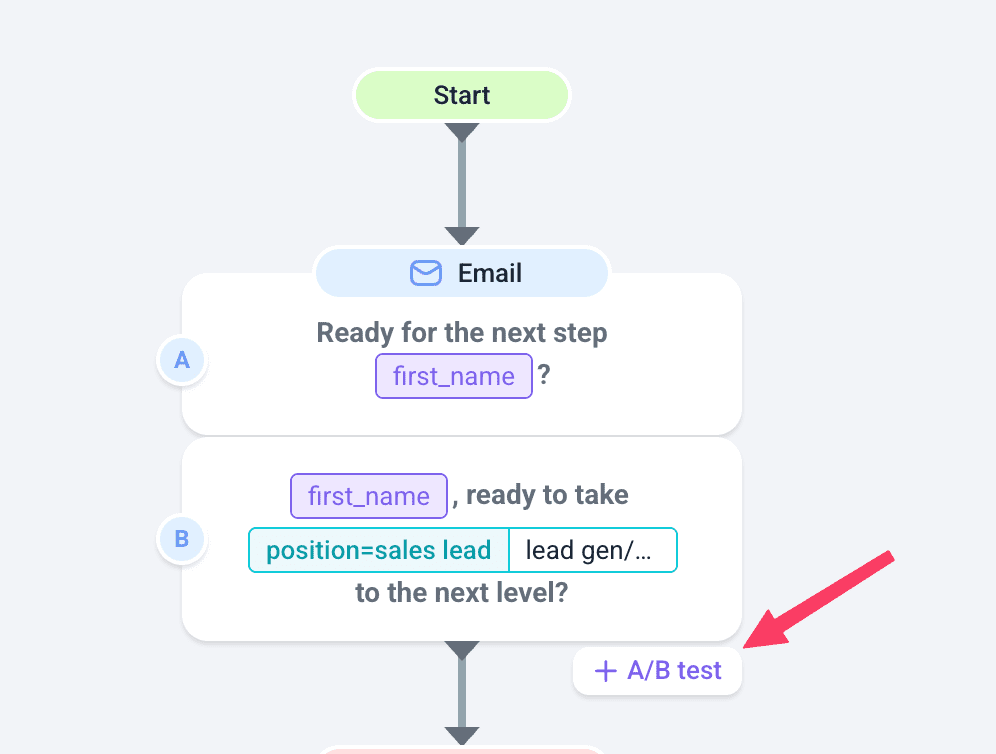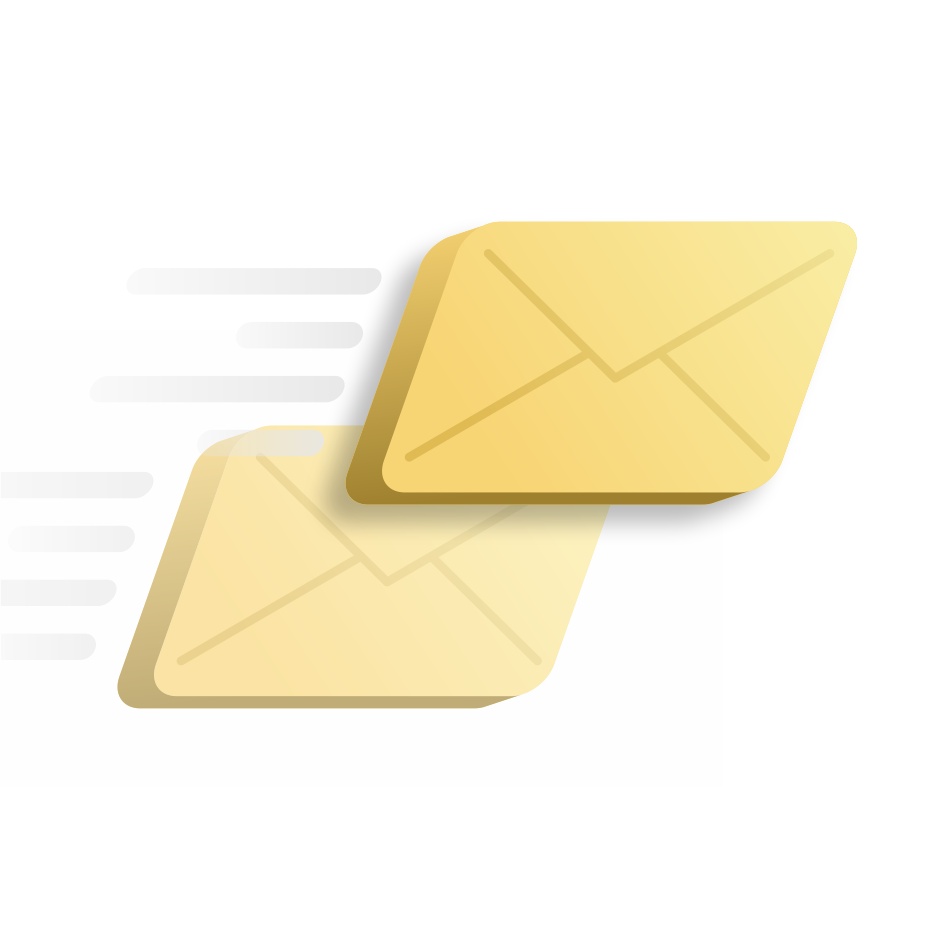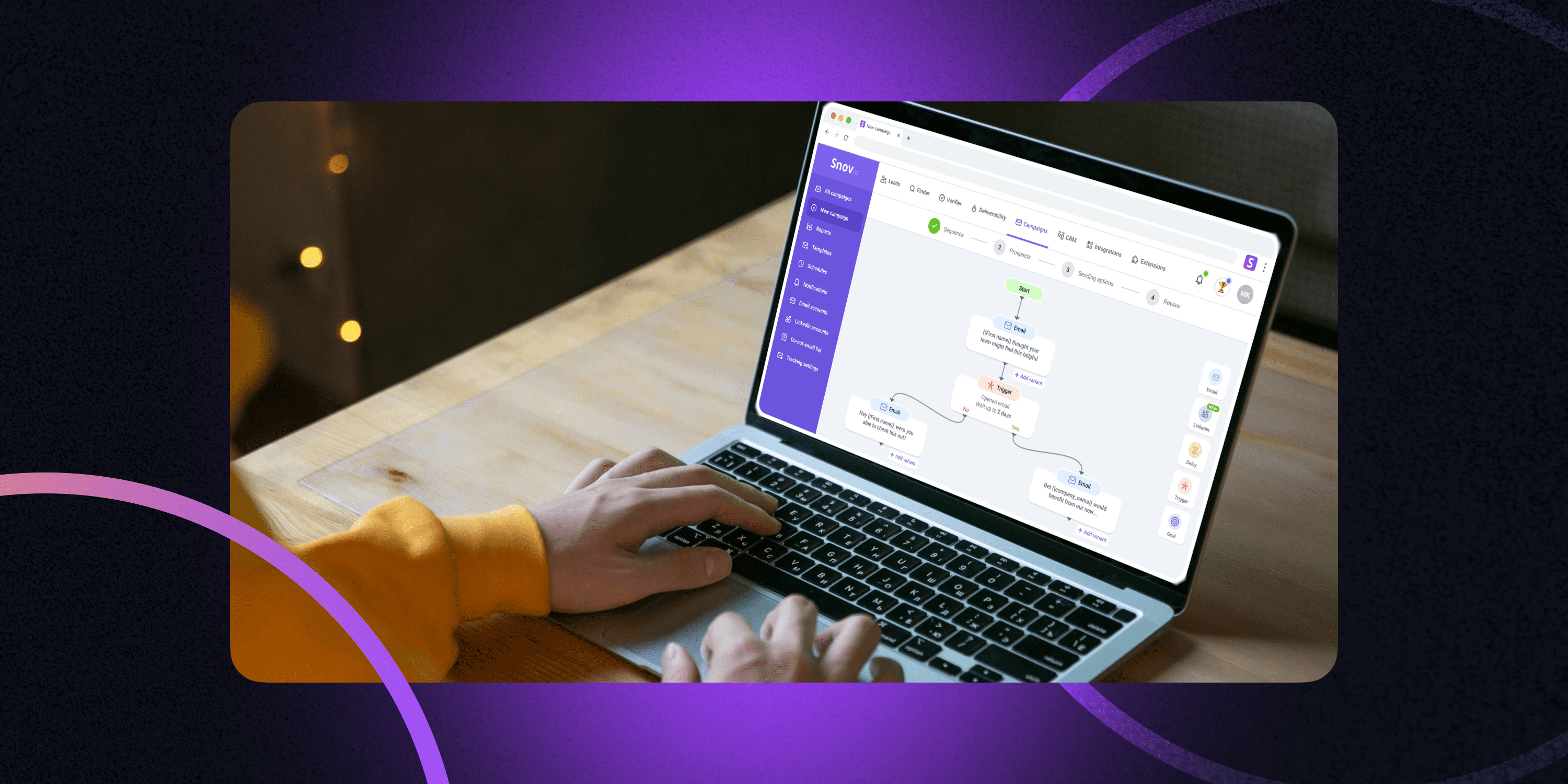TL;DR:
Effective follow-up email subject lines can significantly impact your cold outreach. This guide covers how to write a compelling follow-up email subject line that sparks curiosity, avoids spam triggers, and ensures your message is read.
You’ll find 60+ proven sales email subject lines for different scenarios (no response, post-meeting, networking, job applications) plus tips on personalization, clarity, and testing.
To make it even easier, you can streamline the entire process with Snov.io: build verified email lists, warm up your account for better deliverability, A/B test subject lines, and track campaign performance.
Outline:
Why are follow-up email subject lines important?
A follow-up email is effective only if it gets read, and your follow-up email subject line is the first thing the recipients see, influencing their decision to open the message.
According to the Email Statistics Report for 2025 by ZeroBounce, 43% of people open their emails if it has a catchy subject line.
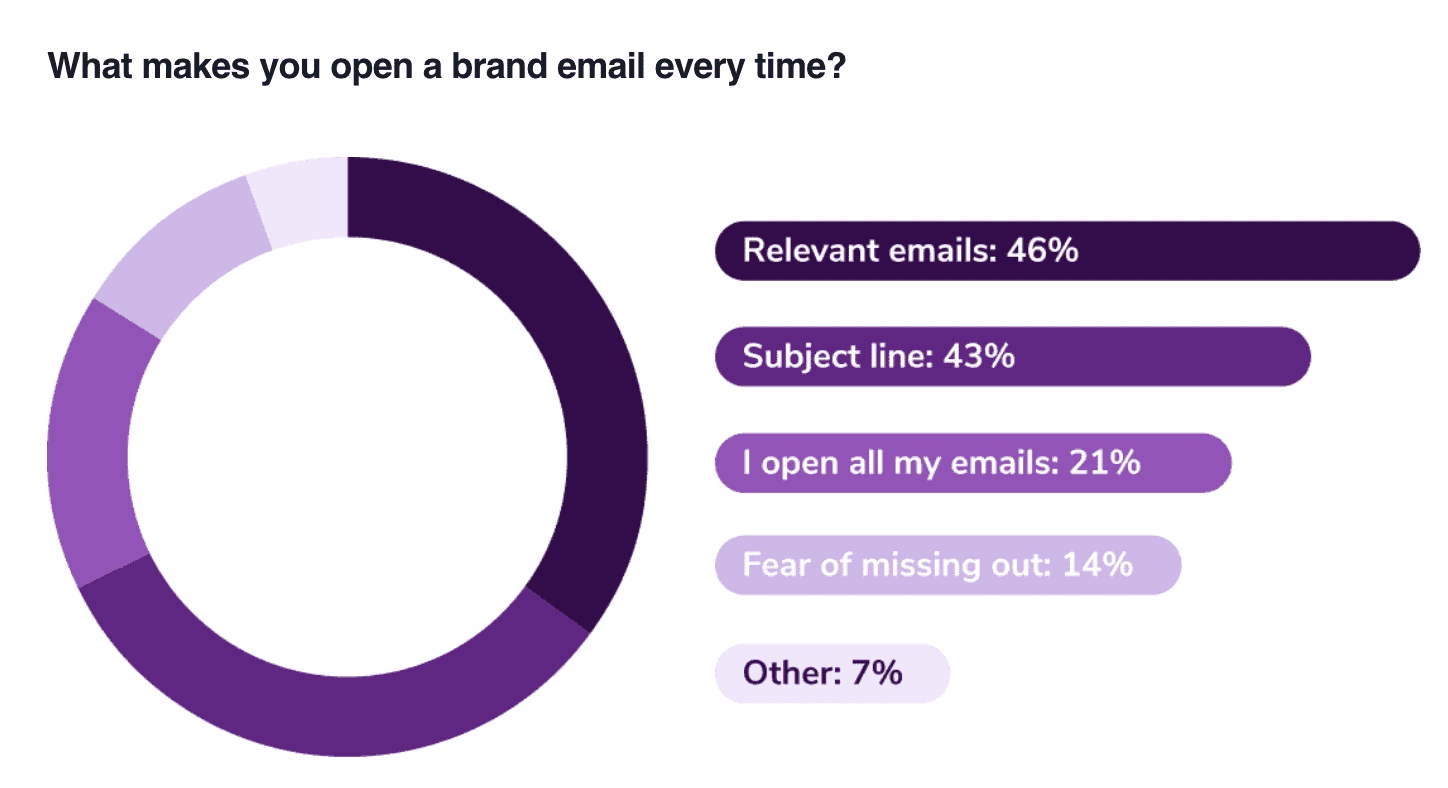
So, no matter how thought-out or value-driven your email is, it will likely be ignored if the subject line doesn’t capture attention. It can also help you increase open rates, improve overall campaign performance, and, eventually, close deals.
Benefits of follow-up email subject lines:
- They boost open rates
A compelling subject line grabs attention and incentivizes recipients to open your email.
- They drive conversions and engagement
A well-written subject line can pique interest and encourage recipients to learn more about your services or product.
- They improve your email deliverability and sender reputation
Crafting personalized subject lines that avoid spam triggers is essential not only for capturing your lead’s attention but also for maintaining a strong sender reputation. By making your subject lines relevant, personalized, and free of spammy language, you protect your domain health, improve deliverability, and ensure your emails consistently land in the inbox.
|
🔎 Expert tip If you’re wondering how to improve email open rates, especially for cold emailing, start by optimizing deliverability. Leverage Snov.io’s Deliverability Check to assess and improve your email placement and detect email issues.
By running a deliverability test, you also receive personalized recommendations on how to fix email issues and improve results. Plus, this tool analyzes your content, helping you optimize subject lines to avoid spam filters, which is crucial for the success of your campaigns. |
Best practices for crafting follow-up email subject lines
So, we already know that creating a strong subject line is essential for overall email performance. But how do you write truly compelling or even the best subject lines for follow-up emails?
As always, we’ve got your back. Let’s break down the tactics for writing the best subject lines for your follow-ups.
Keep your subject lines short
I recommend writing concise subject lines to make them easy to read, especially on mobile devices. Try to use no more than 9 words or 60 characters. But don’t make your sales email subject lines too short. The perfect length is 3-7 words or 20-50 characters. From my experience, such length works best.
Current data supports my point. According to B2B email benchmarks by Belkins, subject lines with 3, 7, and 8 words have the highest open rate, up to 33%.
Personalize the subject line
The generic approach to communication with prospects shows weak results—and subject lines are no exception. Personalize a follow-up email subject line by adding your recipient’s name, a company name, or referencing your previous experience with the recipient.
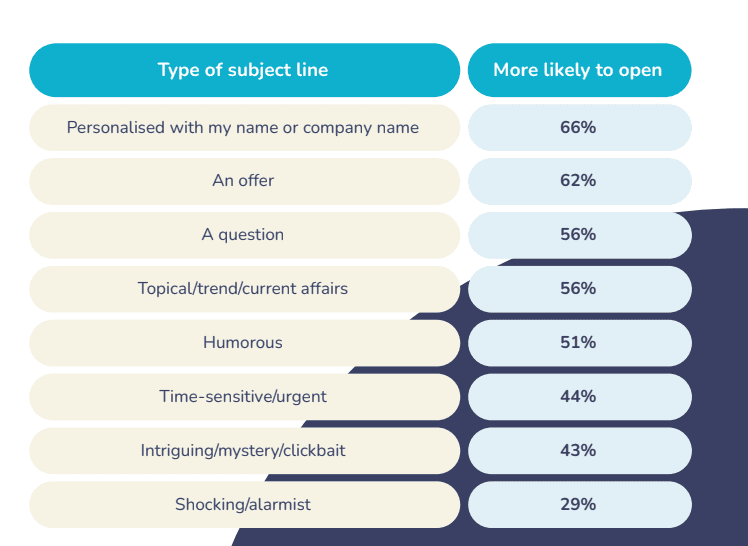
For example, if you are following up after an event, mention the event name in the subject line. Alternatively, if you are reaching out after submitting a job application, personalize your follow-up email subject line with the job title you applied for.
Make the subject line clear
Create a subject line that relates to the purpose or content of your email. Too vague sales email subject lines can be easily ignored. The same applies to misleading subject lines that may even annoy recipients, resulting in negative responses.
Spark the curiosity with your subject line
Try to make your follow-up email subject lines intriguing. You can highlight the benefits or specific outcomes your recipient can get. For B2B sales follow-ups, consider referring to the lead’s pain points in the subject line.
According to email marketing best practices, a sense of urgency is also a good idea for encouraging recipients to act quickly. However, avoid being too pushy when writing cold emails.
Avoid spam triggers when sending your emails
Email providers use spam filters to block unwanted or potentially harmful emails. If your message is overly promotional, deceptive, or irrelevant, it may be flagged as spam and not reach your prospects’ inboxes.
To prevent being blocked by spam filters, I recommend avoiding words like free, guarantee, urgent, or limited-time offer. This also applies to excessive punctuation, all caps, or clickbait headings. Instead, keep your subject line natural to improve email deliverability.
60+ follow-up email subject line templates
Crafting effective subject lines can be challenging. To help you get started, we here at Snov.io prepared ready-to-use subject line templates for different follow-ups. Choose the best option for your purpose, or get inspired to create your own.
Sales follow-up email subject lines:
Still interested in [product/service]? Let’s chat!
[First Name], ready to take [Specific Goal] to the next level?
Ensuring you’re satisfied, [Name]
Exclusive offer just for you, [Name]!
Any further assistance needed, [Name]?
[First Name], we found a way to cut [Problem] by [XX%]
Can we help with your decision, [Name]?
Exciting opportunity – Awaiting your reply, [Name]
Don’t miss this opportunity for [Benefit]
How we can help with [Pain Point]
Follow-up after no response:
[First Name], we can help you achieve [Specific Goal]
A friendly reminder: Awaiting your response
Is this still a priority for [Company Name]?
Re: [Original subject line]
Awaiting your reply on [Topic]
An idea for [Company Name]’s [Goal]
One thing that could change [Company Name]’s results
Networking follow-up subject lines:
Great connecting at [Event Name]—let’s keep in touch
Want to continue our conversation on [Topic]?
Enjoyed our chat at [Event Name]—let’s talk again
Let’s keep the conversation going after [Event]
Loved your thoughts on [Topic]—let’s connect
Thanks for your insights at [Event Name]—let’s keep in touch
Connecting after [Event Name]—great to meet you
Loved our discussion on [Topic]—excited to stay in touch
Following up after our chat at [Event Name]
[Name], let’s collaborate on [shared interest]!
Let’s schedule a follow-up conversation, [Name]
A quick hello after [Event Name]
Following up on the job application:
Following up on my application for [Job Title]
Still interested in [Job Title]—any updates?
Looking forward to the next steps at [Company]
Reaching out about my application for [Job Title]
Touching base on my application for [Job Title]
Still excited about [Company]—would love an update!
Eager to join [Company]—any news?
Follow-up after job interview:
Appreciate your time discussing the [Position] role
Excited about the next steps for [Position]
Looking forward to contributing to [Company Name]
[Interviewer’s Name], here’s why I’m the right fit
Appreciate the opportunity to interview for [Position]
Any updates on the [Position] role process?
Here’s how I can contribute to [Specific Project/Goal]
Do you need any additional info?
Checking in regarding next steps for [Position]
Follow-up email subject line after a meeting:
Great meeting today—excited to move forward!
We appreciated meeting you, [Name]!
Here’s what we talked about—let’s take action!
Following up on our discussion about [Project]
Key takeaways from our meeting—what do you think?
Next steps for [Company Name] & [Your Company]
[First Name], great connecting with you yesterday!
Excited about what’s next for [Project/Collaboration]
Moving forward with [Initiative/Plan]
Thank you for a productive meeting, [Name]!
Here’s how we can make [Project] happen
Following up on a phone call:
Great talking with you earlier, [First Name]!
Here’s the info I promised after our call
[Name], thanks for your time today—excited to move forward!
Continuing our conversation, [Name]
Your thoughts on our call agenda, [Name]?
Appreciated our time together, [Name]
Thanks for the call—here’s what’s next
Post-call follow-up: your input needed
Common mistakes to avoid in follow-up email subject lines
Before you start crafting a follow-up email subject line, I want to share common mistakes to avoid to ensure your message gets the attention it deserves.
- Using special characters. Characters like $, #, @, & can make your subject line look attention-grabbing. However, they may also trigger spam filters. I recommend avoiding these symbols in your subject lines.
- Making your follow-up email subject lines too short. One- or two-word subject lines may lack clarity or intrigue. For example, a vague subject like “Following up” or “Quick Question” doesn’t provide enough context to encourage the recipient to open the email.
- Overusing emojis. Emojis can enhance readability and bring an entertaining vibe when used appropriately. However, overusing them can make your subject line look unprofessional. Consider the context and audience and add emojis sensibly to maintain credibility.
- Using misleading subject lines. Avoid writing follow-up email subject lines that overpromise or fail to match the content of your message. This can not only frustrate recipients but also damage your brand image and trust. Although clickbait subject lines may initially increase open rates, they eventually lead to negative responses and unsubscribes.
- Forgetting to A/B test. How do you know the subject line you create is the best option? Besides, what works for one audience may not work for another. Without A/B testing, you miss opportunities to craft subject lines that resonate with recipients more and increase open rates.
To get reliable results, focus on testing one variable at a time and keep your ICPs consistent. This helps you pinpoint exactly what made the difference.
When we sent cold emails to C-level executives at product companies across Europe, our initial reply rate dropped to below 1% (down from 2.5% in a previous campaign). We decided to optimize and run some tests, so we changed the subject line, experimented with the sender’s name, added dynamic content, and implemented other changes.
Results of the new flow: the reply rate increased from less than 1% to a stable 3-4%. We had targeted leads who were willing to chat with us or even refer us to their community and network.
VP of Sales at Snov.io
How to automate follow-up emails with Snov.io
Automating follow-up campaigns can not only save your time but also increase ROI and bring more conversions. So why not leverage automation? Here is a proven email automation strategy from Snov.io to set you up for success.
Step 1: Create your email list
Start by building a reliable prospect list for your campaign. Collect verified email addresses based on names, company domains, or social links with Email Finder. Along with addresses, you receive extra data like job position, location, industry, and more, allowing you to filter your leads and create highly targeted campaigns.
You can also upload your contacts to Snov.io and apply Email Verifier to clean your list and remove invalid or duplicate emails. With a verified list, you ensure higher deliverability and avoid bounce rates that can impact your sender’s reputation.
Step 2: Warm up your account
Use the Snov.io Warm-Up tool to prevent your emails from landing in spam. This automatic email warm-up lets you build a positive sender reputation and improve deliverability, ensuring perfect inbox placement of your follow-up campaigns.
Step 3: Create follow-up email sequences
Now it’s time to craft your follow-ups. You can create a sequence from scratch or choose one of the pre-made templates in Snov.io. Tailor your messages with in-built personalization features, add desired delays between follow-ups, and set triggers to schedule your emails based on engagement.
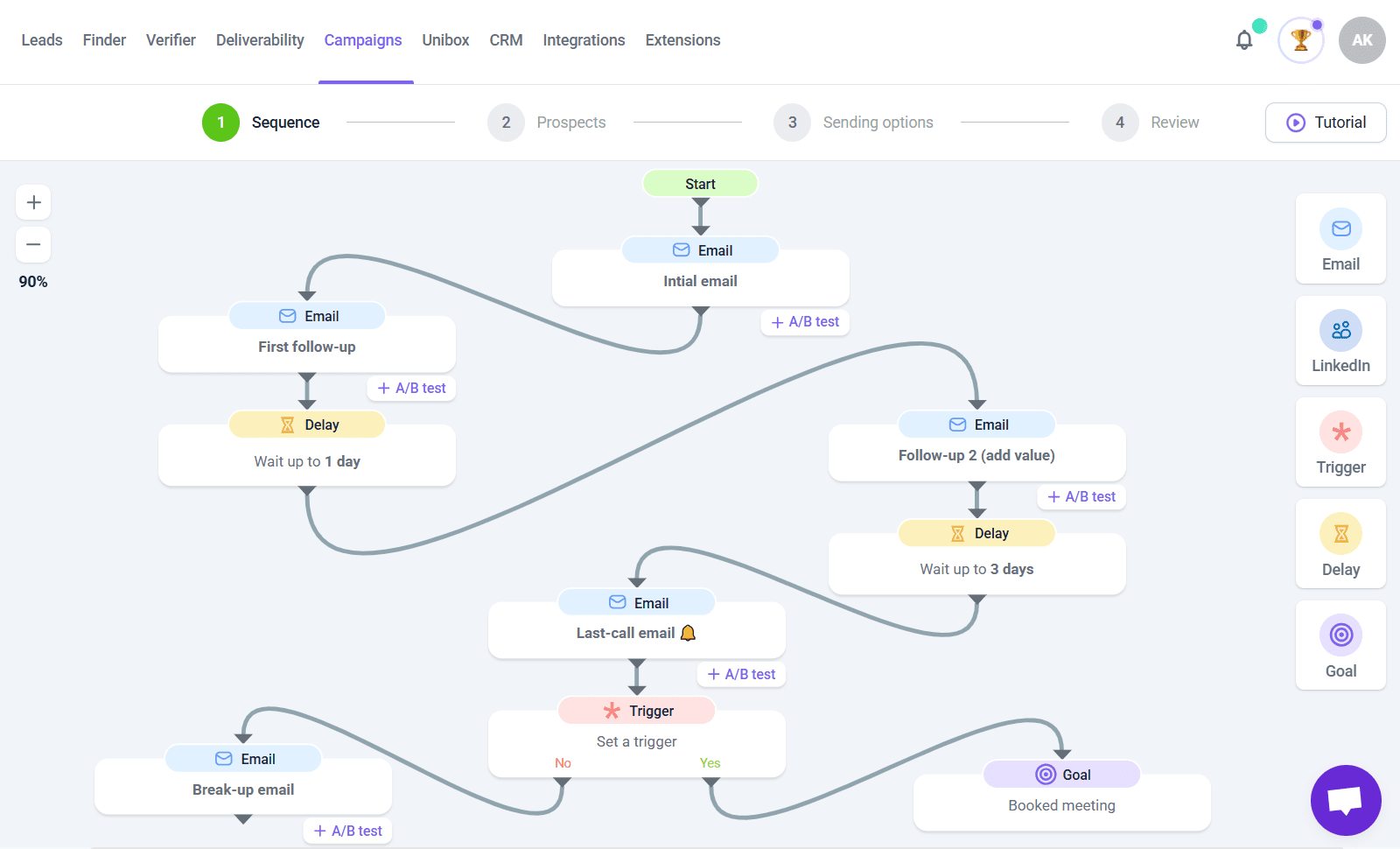
Step 4: Track and optimize your email campaigns
Once you launch your follow-up campaign, continuously monitor their performance to never miss out on any growth opportunity. Snov.io cold outreach tool provides detailed reports, allowing you to monitor key metrics and get personalized insights on improvement.

I also recommend A/B testing various sales email subject lines and comparing performance metrics to see what works best for your audience.
Key takeaways
The success of your follow-up email starts with a compelling subject line. Whether you are following up on a proposal, with a sales pitch, or after no response, a well-crafted subject line can improve open rates and increase the chance of a positive response.
Hopefully, these best practices and tips will help you create a strong follow-up email subject line and strike your prospect’s inbox. Want to enhance messaging even more? Then, Snov.io is at your disposal.


